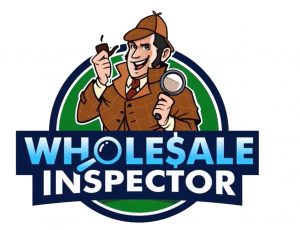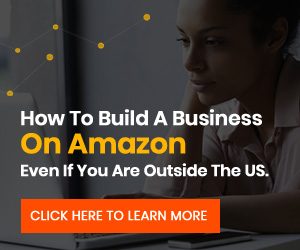
fba.cafe blog – create your future
why we started fba.cafe
I don’t know about you, but I have gone through a lot of financial situations in this society that were not always cool. The economic situation in this world is definitely a risk factor for the guy in the street, like you and me, and my wife and I were looking for more security in our financial situation. We were both very successful in what we were doing and had accomplished a lot for our employers, but we decided we needed to stand on our own feet, so we could be more causative over our financial future. Thus, we started looking for opportunities outside of our usual work environment.
The Amazon FBA Wholesale Game
In our search for an opportunity, we ran into Mr. X (we don’t really want to reveal his name here) and he seemed to have an answer to our problem: Amazon FBA Wholesale. We had no clue what it was all about at the time, although we knew the company Amazon of course. We hadn’t been living under a rock so to speak. But the main Amazon business model we had heard about before that day was the Private Label business model. In simple terms, Private Labels is about buying generic products in China, put your own brand name on it, shipping it to the USA and selling a shitload of it online on Amazon.com. Sounds simple enough, right? Well, we didn’t like the idea so much. Too many unknown factors and dealing with a country we were not familiar with (China).
We did check the possibility though to start a Private Label business and visited a trade show in Berlin where we met with some great Chinese suppliers who are selling electronics. But then it immediately became clear to us, that we needed a serious amount of money because they would only sell their products by the container loads. Add the length of time that it takes to get to the USA with a container from China to the equation and you can figure out yourself that this didn’t feed our enthusiasm for that business model. It doesn’t mean though that it is a bad model. Just not to start with in my opinion.
So, back to the Amazon FBA Wholesale business model. Let’s give a definition here first (by the way, we have a big glossary with terminology on this website that you can always check for any term you do not fully understand, and you can find it here). FBA stands for Fulfillment by Amazon and it simply means that you send your inventory (that you purchased from a distributor or manufacturer in the USA) to a warehouse owned by Amazon.com and that they do all the fulfillment, in other words, shipping the goods, doing the customer service, etc. In return, Amazon charges you a fee for their service.
Why you should start with Amazon FBA Wholesale first
Now, this wholesale game looked really simple to us in its essence. You find suppliers online, get their inventory list with products they are selling, check which ones are already selling pretty well on Amazon (there are websites online that will do this automatically for you for a small fee per month) and are sold by multiple sellers (in other words, not just by the brand alone). You check if Amazon allows you to sell it (Amazon doesn’t allow you to just sell anything), which you can check in your Amazon Seller Central account (which is your dashboard where you control your inventory and can see what you sold and where you can contact customers who have directed a question to you instead of to Amazon customer service, amongst a lot of other parameters you can check in your account). Sounded simple enough. Of course, you need to do the work, but it isn’t a complex business model. That’s all I want to point out here.
But where it gets interesting is here. In this business model you don’t take a lot of risk because you already know the products are selling (after your initial research, which we won’t get into here, but will go into elsewhere on this website at a later moment in time) and you do not have to do any marketing or PPC (Pay Per Click) to sell your products. In this model buyers find your products through the Amazon website and Amazon itself is guiding them there. So besides the fees you pay to Amazon and the cost of the goods you are selling, there aren’t a lot of other costs you have to take into account and it becomes easy to calculate your profit margin. And that triggered our interest!
A simple profit model
We are using a very simple profit model ourselves and that is what we will be teaching you on this website. And it goes like this: You start with an amount of money, preferably around the $5000 mark or more (yep, you should invest some money to get a good start). Part of that money is reserved for setting up your business entity in the USA and your own country (if you are not in the USA), some office facilities like a Skype subscription to call to the USA and a Sonotel account to receive phone calls on an American phone number that gets forwarded to your cell phone (Skype is a disaster for incoming calls from the USA if you work with more than one computer/phone that you have Skype installed on, believe us. We’ve tried, but you just never know which computer or cell phone the Skype call is going to be routed to, it is just random, so it is useless and it will drive you crazy that you never know which phone is going to ring). The rest is reserved for buying inventory. But after you have covered these costs, now the fun starts…
This model requires you have another source of income. In the beginning, this is not a model you work on full time and you do not quit your job immediately. This is a model which is great for couples or families where everybody can pitch in and who want to grow their capital. It requires that you reinvest every single penny you make on Amazon back into your business. Because that is where the magic happens (and now we are going to assume some numbers. And although assumptions are the mother of all f*ck ups, we have to assume some things here to make it clear for you why this is a great model in the long run.)
It is all in the numbers…
Let’s say you have $10,000 you can invest in inventory and let’s say we can make 10% profit on that inventory per month (which is not a crazy assumption, many FBA wholesale sellers make more than that a month) and again, let’s say that every single penny that you make goes back into that business. Because that $10,000 will grow into $31,384 after 12 months, $98,497 after 24 months, $309,127 after 36 months and a whopping $970,172 after 48 months. So if you have the discipline and the drive to work this model next to another job you have (and you can) and you have the discipline to leave every single penny you make into that company and reinvest it into inventory, theoretically you will be able to become a millionaire in a little over a year. Not because you paid yourself the profits, but because you will now have that as the value of your inventory.
Below is a little table with different initial investment amounts and possible revenues in the FBA Wholesale game. You can see that when you play this game (again, keeping all your money in the company and reinvesting it in new inventory), you will have 3.14Xed your initial investment after one year, almost 10Xed after two years and when you do this for 3 of 4 years, you’ll be in fat city.

DISCLAIMER: We should mention here that this is a theoretical case and we can never promise you that you will make that much money, we simply give this as an assumed result possible for some of you working this business model. The trick here is to keep investing all your revenue into new inventory.







